For those of us that pay close attention to the central bank’s policies and the expert’s interpretation of those policies, you’d think that a global recession is certain and just around the corner. Most notably, there’s been a lot of focus on the relationship between short and long-term interest rates (the yield curve), as well as negative rates in Europe.
This fixation on the yield curve has been most interesting. In the past six months, you couldn’t find a financial publication that didn’t conclude the spread between short and long-term interest rates was pointing to a recession within the next year. And while it is true that an inverted yield curve (rates on short-term loans being higher than those on longer-term loans) has preceded an economic slowdown before, we live in very different times now.
Since the financial crisis, interest rates have become one of the most manipulated statistics in the financial markets. Gone are the days when the Fed simply set overnight lending rates and bank reserve levels and all other rates were market based. The Fed, and its foreign counterparts, are now the largest active buyers in the secondary bond market and more politically active in their decision making than we’ve seen in our lifetimes.
The result is that bond yields no longer purely reflect the status of the economy. The debate over what yields indicate has been a big driver of the stock market volatility. Over the last six months, the stock market has traded up and down roughly 7% on three different occasions. Much of this action has been closely correlated with changes in yield on the 10-year treasury bond.
Looking at the actual economic data, you’d be hard pressed to point to any serious weakness. GDP is lower relative to previous highs, but still above the trendline. Employment, another important indicator, is quite bullish as well. Yet, the Fed has lowered the discount rate twice this year and is expected to lower it another 25 basis points before year-end. Their stated reasoning is that they’re preempting a slowdown that may arise from the ongoing trade disputes. That may be partially true, but we think there’s a different agenda at work.
As low as our interest rates are, they’re still much higher than the rest of the major economies. For example, earlier this year, Germany issued their first negative rate 30-year bond at -0.8% and -0.6% for a 10-year bond. The relative high rates on U.S. treasuries have increased the demand for the dollar since foreign buyers must pay for those bonds with our currency. Thus, the demand has driven up the dollar’s value. As rates have declined, the dollar index has increased 3.7% from a year ago. This stronger dollar has then made our exports less competitive.
We believe this is what’s really behind the Fed’s decision to cut rates. After all, no one really believes a quarter point drop from already ridiculously low rates is going to spur anything. No, more realistically, bringing our rates more in line with the rest of the world would ease the dollar’s rise and help our exports. That’s important when you’re in the middle of a trade war. We think this is what’s really behind the President’s public criticism of the Fed. It’s taboo for leaders or central banks to advocate for a weaker currency, although everyone wants that for trade competitiveness. This is a backhanded way to accomplish that.
So, where’s the risk? We can’t dismiss the market’s volatility – it’s either telling us something or it’s not. If it’s not, there is the possibility that a selloff will arise as a sort of self-fulfilling prophesy. No one wants to be the last out the door when it comes to trading. These things tend to create their own pessimism. The good news is that if worries are not confirmed by the data, stocks often rebound quickly. We’ve seen this in action this year. If the yield curve is telling us something, it’ll be that trade and currency wars need to be resolved sooner than later.




